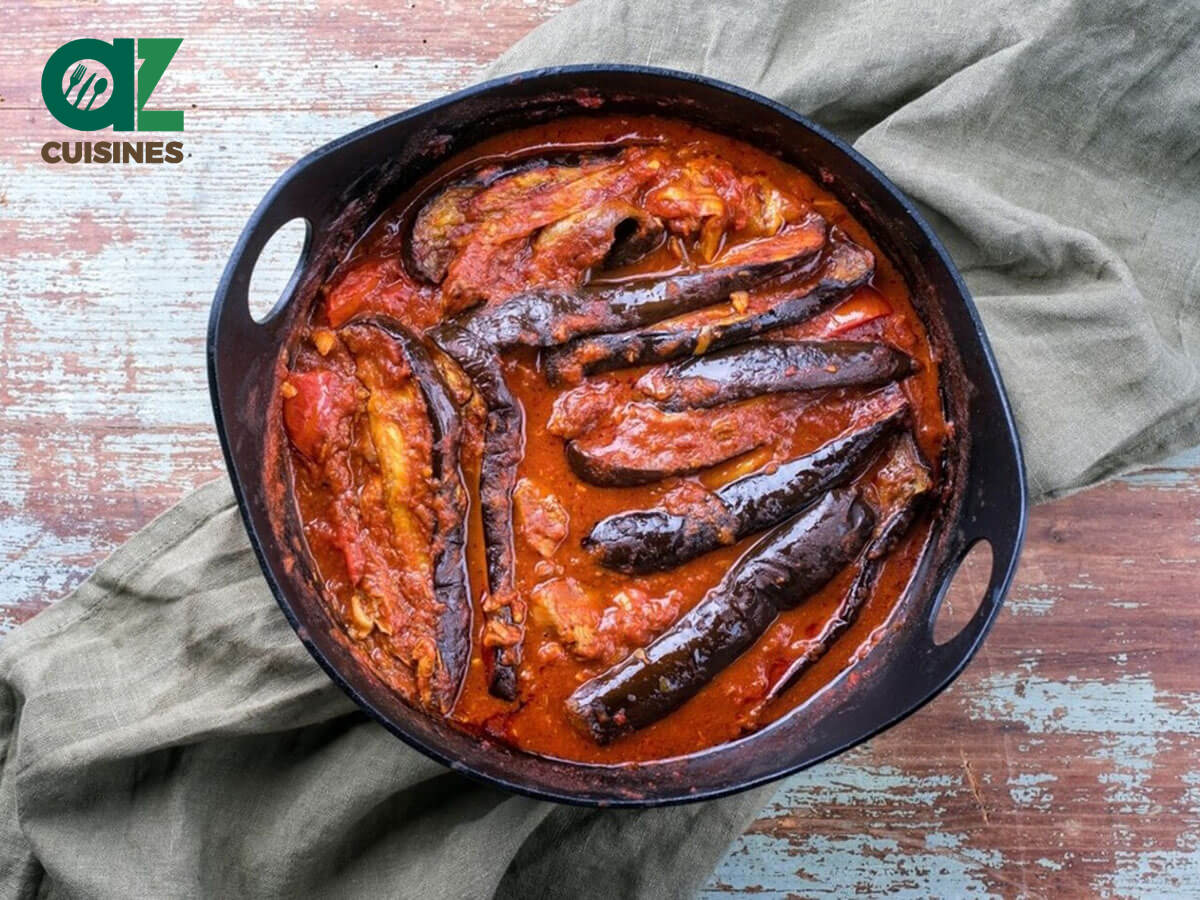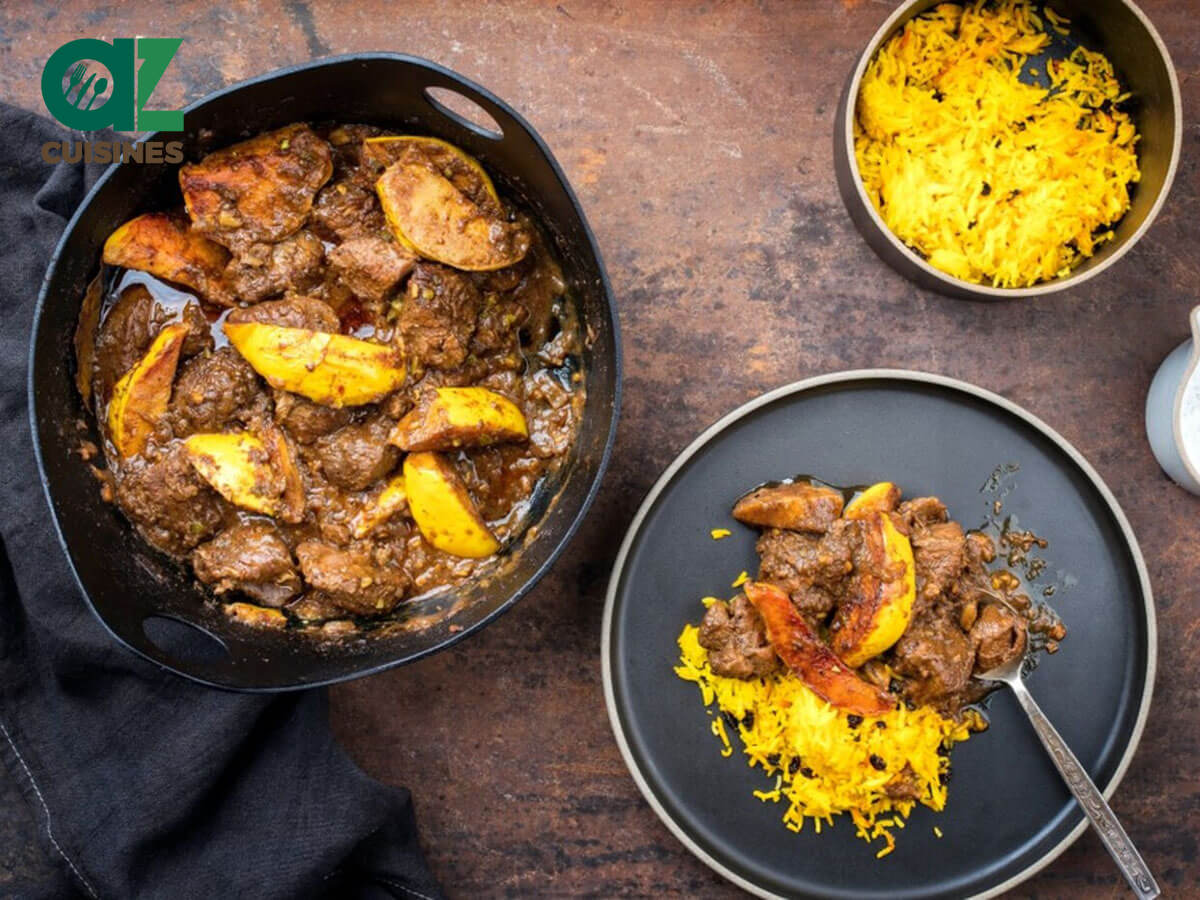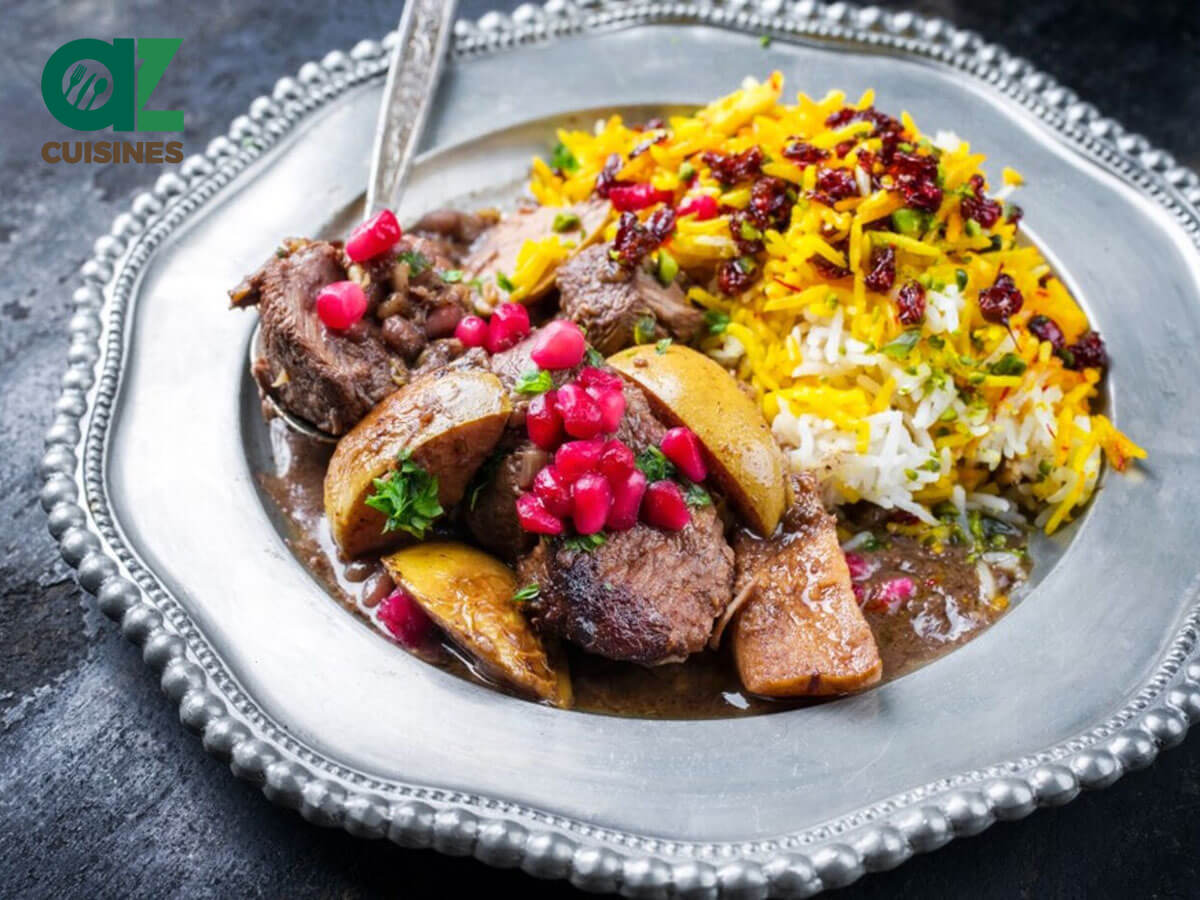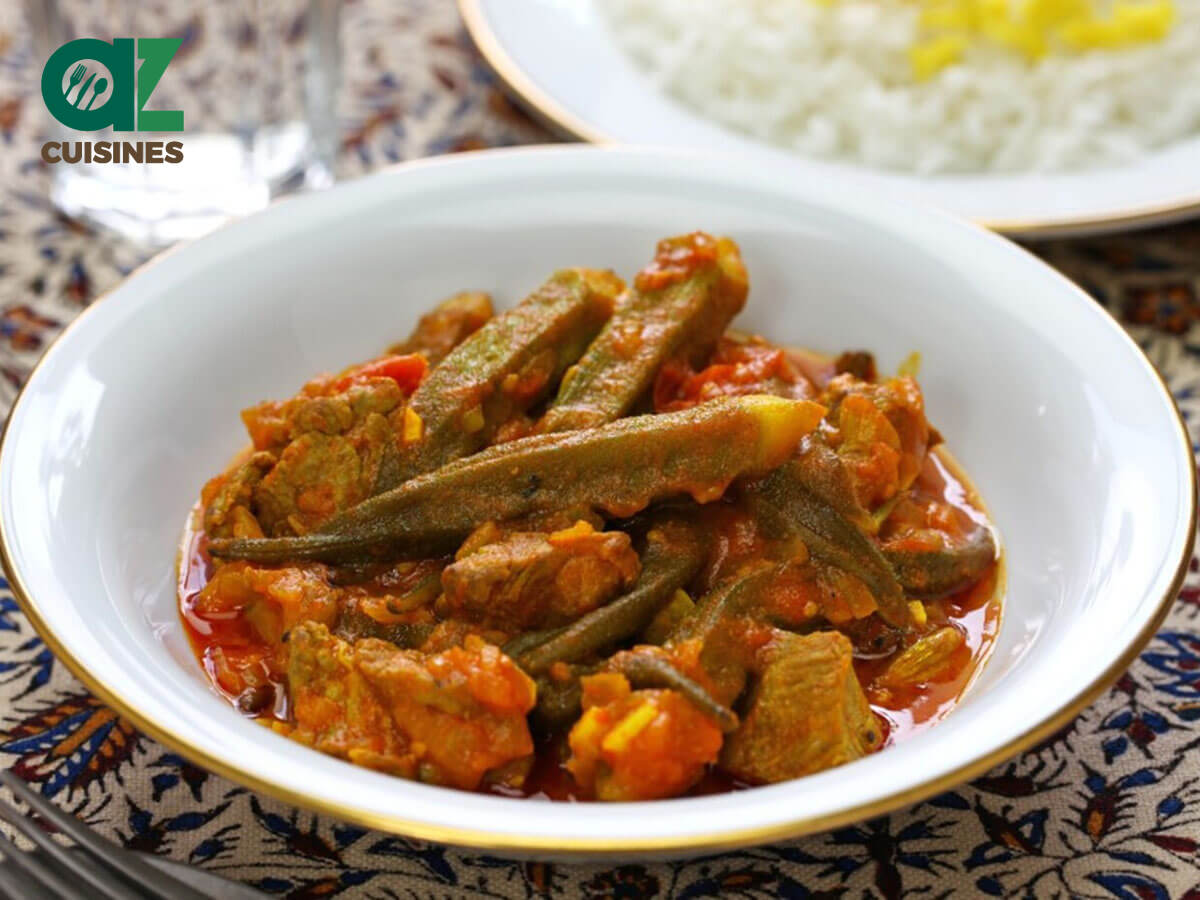#18 in Tajikistan
Khoresh: Ingredients and Preparation
Main Ingredients
Main Cooking Method
Preparation Process
Khoresh: A Deep Dive
Cultural Significance
Taste
Texture
Aroma
Color
Serving Style
Serving Temperature
Accompaniment
Occasions
Seasons
Special Diets
Calories
Popularity
Popular Similar Dishes
- Abgoosht
- Curry
- Tajine
- Goulash
- Haleem
- Irish Stew
Popular Dining Area
Khoresh (also spelled as khoresht) is an Iranian term referring to various traditional types of stews in Iranian, Afghan, Tajik, and Kurdish cuisines.
Khoresh ingredients vary widely. It typically includes meat (often chicken, lamb, or beef), vegetables (e.g., eggplants, tomatoes, split peas), fruits (e.g., quinces, plums), herbs (e.g., celery), and spices (e.g., saffron turmeric).
In addition, common seasonings are salt, pepper, advieh (a Persian spice mix), and oil. Most khoresh recipes require slow cooking to meld the flavors together. These stews are best to enjoy with rice (known as polo in Persian culinary tradition).
Iran cuisine (aka Persian cuisine) has many khoresh varieties made from different and unique ingredients.
One of the most popular types is ghormeh sabzi, which is considered Iran’s national dish. Plus, its vegetarian versions are also prevalent in this cuisine.
After that, let’s dive into other insights about khoresh’s advantages and disadvantages, frequently asked questions, and explore dishes similar to it.
Key Points
Khoresh Images
What Are The Types Of Khoresh?
Khoresh comes in many types based on its ingredients and regions. Here are 14 well-loved varieties below.
Every khoresh variant has unique features, but they all come with pros and cons shown in the next section.
Pros and Cons Of Eating Khoresh
Let’s check below the benefits and disadvantages of khoresh for more insights about this delicacy.
Pros
Cons
Ultimately, you’ll explore more about khoresh’s addressing questions from various diners.









Adam Sam
Senior Food and Drink Editor
Expertise
Food Writer & Recipe Developer, Recipe Tester, Bartender, Cooking-video Maker, Editor In Chief
Education
Adam Sam, an experienced food writer and recipe developer, is passionate about blending diverse culinary traditions, national dishes, and innovative beverages, showcasing his proficiency in both traditional and modern recipe testing.
As the Editor-in-Chief, he elevates culinary content from street food to fine dining, focusing on Western cuisine and types of drinks at azcuisines.com, and is professional in creating engaging cooking videos that simplify complex dishes and ingredients.
His passion for food is evident in his writing, where he uniquely merges various cultures, traditions, and contemporary trends, skillfully combining classic recipes with modern cooking methods.